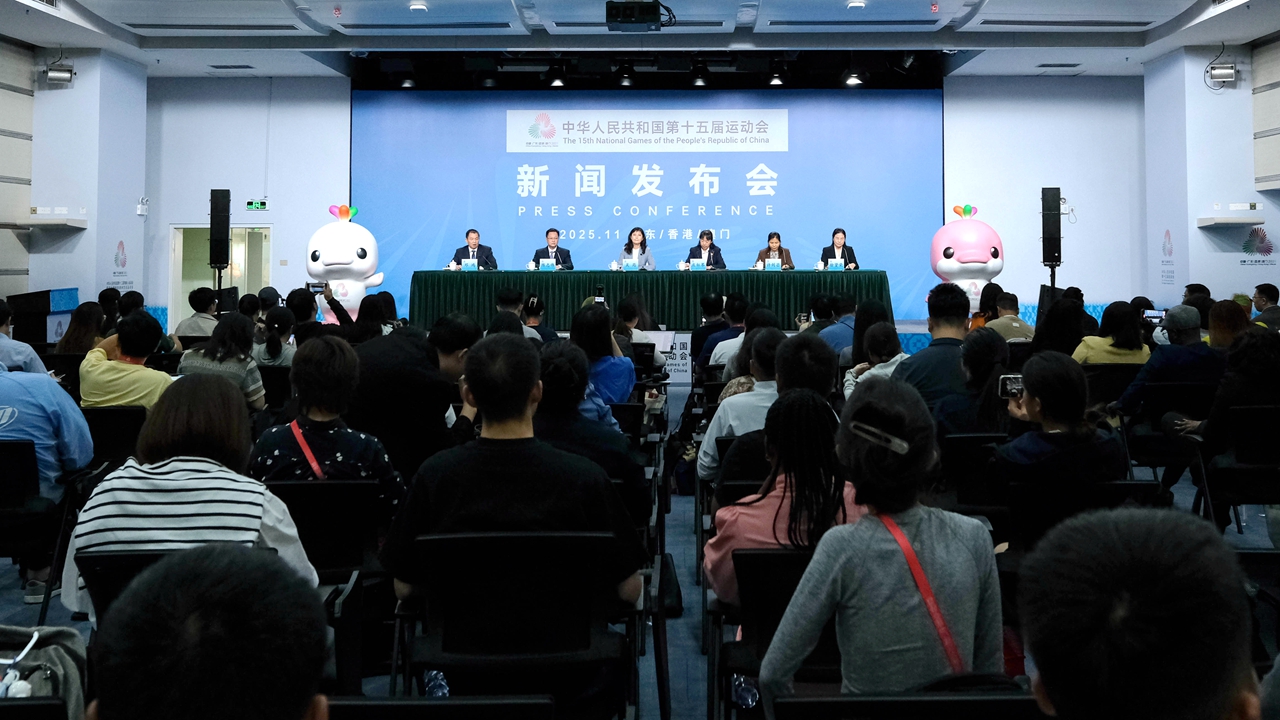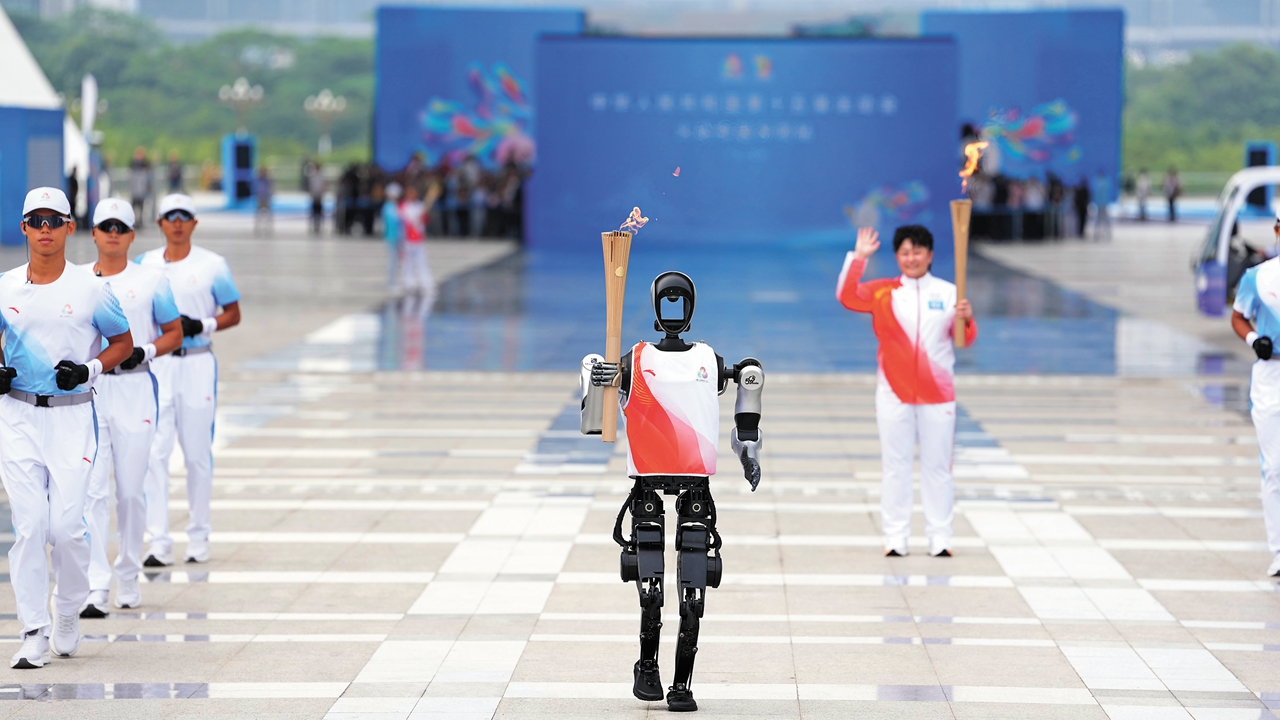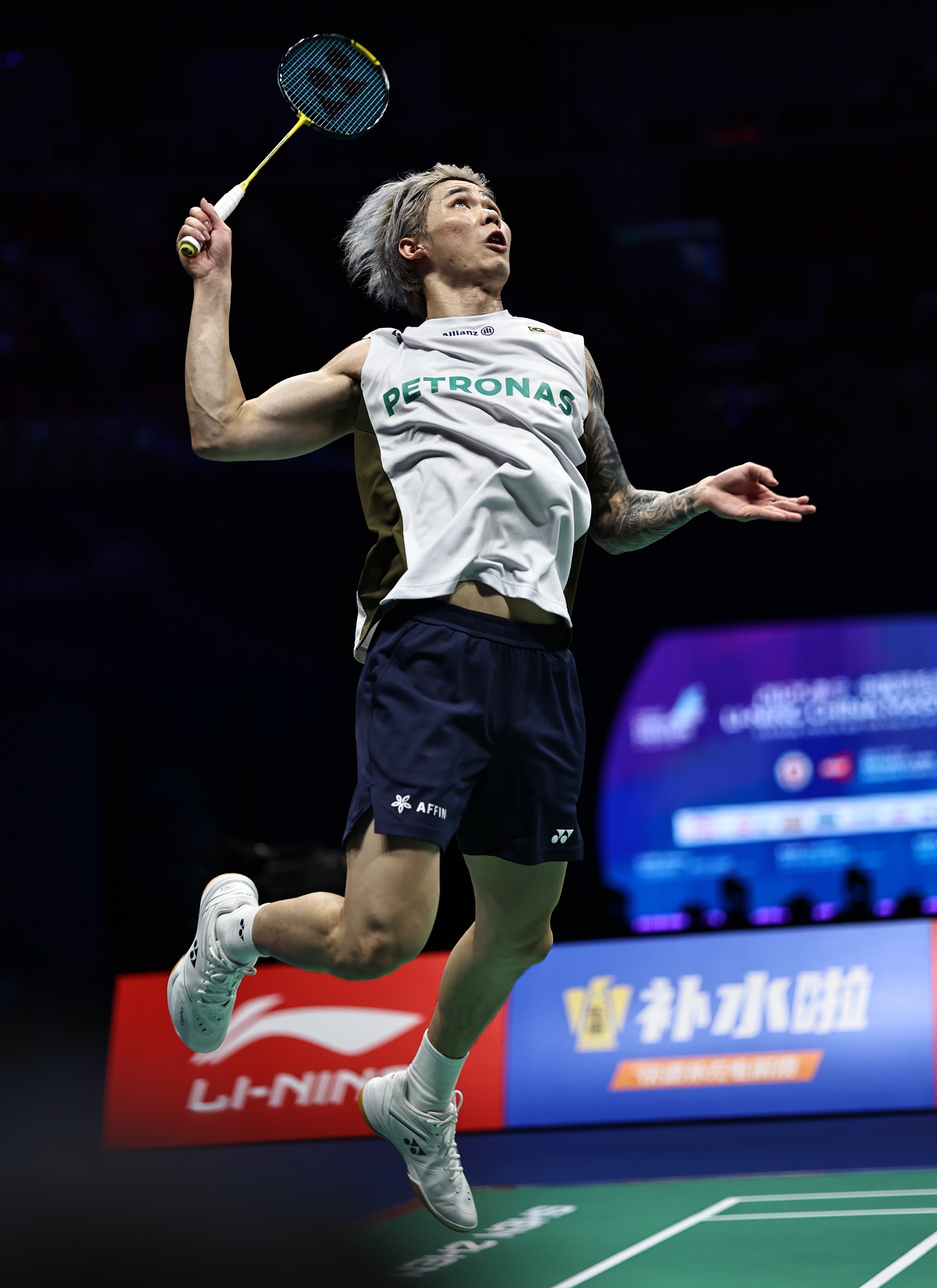Shenzhen aims to become global 'City of Sports'
Writer: Zhang Yu | Editor: Zhang Chanwen | From: Original | Updated: 2025-11-18
If cities have sporting personalities, Shenzhen is staking its claim as the tech-savvy, ambitious innovator of the pack.
Fresh from hosting events for China’s 15th National Games, the southern metropolis is leveraging the event’s momentum to launch a comprehensive plan to establish itself as an international hub for sports-related consumer spending and high-profile events, a city official announced yesterday.

Wu Jun (3rd L) unveils Shenzhen’s strategy to become a global hub for major sports events at a press briefing in Guangzhou. Lin Weihang
At a press conference in Guangzhou, Wu Jun, deputy secretary-general of the Shenzhen Municipal Government, detailed the city’s post-Games strategy, framing it as a natural extension of Shenzhen’s identity as a “city of innovation, opportunity, and the future.”
“We are seizing the opportunity presented by the 15th National Games and 12th National Paralympic Games, along with the 9th National Special Olympics Games, to accelerate the building of an international and high-quality ‘City of Sports,’” Wu said. Hosting major events, she added, is a catalyst for upgrading urban industry, cultural tourism, and consumer habits.
 Sailing teams race in an international regatta in Dapeng Bay. Liu Xudong
Sailing teams race in an international regatta in Dapeng Bay. Liu Xudong
The city’s ambition is backed by robust economic data. In 2024, the total output of Shenzhen’s sports industry reached 211.56 billion yuan (US$29.7 billion), a year-on-year increase of 10.8%. The added value of the sports industry is expected to hit 100 billion yuan by the end of 2025.
Residents are active participants, with total sports-related spending hitting 73.64 billion yuan in 2024, averaging 4,093.96 yuan per person. This figure accounts for nearly 8% of per-capita consumer spending, underscoring a deep-rooted sports culture.
The city’s infrastructure provides a solid foundation, with over 46,000 sports venues now available — a 66.9% increase since 2020.

A rider competes in the equestrian team dressage event of the 15th National Games at the Shenzhen Guangming International Equestrian Center in Shenzhen on Nov. 10. Liu Xudong
During the National Games, the Shenzhen division integrated cutting-edge technologies like digital twins, 5G-Advanced, and AI into event organization and venue management.
A key innovation was a triple-verification system — combining facial recognition, smart wristband positioning, and timing scoring — that enabled seamless customs clearance for the cross-border marathon event. Humanoid robot Kuavo became a signature technological highlight as it carried and passed the torch during the torch relay.

Kuavo, a humanoid robot developed by Shenzhen-based Leju Robot, takes part in the torch relay at Lianhua Hill Park in Futian District on Nov. 2. Xinhua
As a sporting spectacle, the National Games has already delivered an economic boost. In the first three quarters of 2025, the city received 142 million tourist visits, generating 220.44 billion yuan in tourism revenue, with strong growth in visitors from Hong Kong and Macao.
Looking ahead, Shenzhen plans to host over 100 international and influential sporting events annually. The calendar remains packed, with the Shenzhen Marathon, China Cup International Regatta, and Shenzhen 100 Mountain Running Race scheduled for the end of this year.
Major events for the coming year include the China Badminton Masters, IIHF Ice Hockey World Championship Division I, Group B, and a football invitational tournament for Asia-Pacific youth.

A badminton player competes during a game at the Li-Ning China Masters in Shenzhen on Sept. 16. Liu Xudong